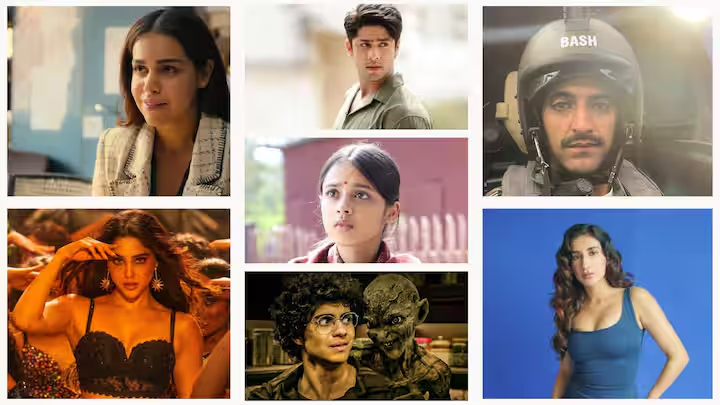Breakthrough Performances: Indian Actors Who Redefined Their Genres
Indian cinema is renowned for its rich diversity and evolving storytelling techniques. Throughout its history, numerous actors have delivered performances that not only captivated audiences but also redefined their respective genres. These breakthrough performances have set new benchmarks in Indian cinema, showcasing the actors’ exceptional skills and altering the course of film narratives. This article explores some of these transformative performances and their impact on the genre.

The Dramatic Transformation
Amitabh Bachchan in Zanjeer (1973)
Amitabh Bachchan’s role in Zanjeer marked a turning point in Indian cinema, introducing the “Angry Young Man” archetype. Before this film, Bollywood primarily featured romantic heroes and melodramatic leads. Bachchan’s portrayal of Inspector Vijay, a brooding and rebellious police officer, brought a gritty realism to the screen. This performance established Bachchan as a major force in Indian cinema and redefined the action genre, paving the way for more complex, socially conscious protagonists.
Shah Rukh Khan in Dilwale Dulhania Le Jayenge (1995)
Shah Rukh Khan’s performance in Dilwale Dulhania Le Jayenge (DDLJ) revolutionized the portrayal of romance in Bollywood. Khan’s charismatic and modern approach to the role of Raj, a charming young man who fights for his love, became a template for future romantic leads. His blend of traditional values with contemporary sensibilities helped redefine the romantic genre and solidified his status as the “King of Romance.”
The Rise of Realism
Aamir Khan in Lagaan (2001)
In Lagaan, Aamir Khan delivered a performance that combined historical drama with social commentary. Khan’s role as Bhuvan, a farmer leading a rebellion against colonial rulers through a cricket match, was both physically demanding and emotionally complex. This performance redefined the historical and sports drama genres in Indian cinema, demonstrating how a film could merge entertainment with powerful messages.
Vidya Balan in The Dirty Picture (2011)
Vidya Balan’s portrayal of Silk Smitha in The Dirty Picture broke new ground in Indian cinema by focusing on a complex female character. Balan’s fearless depiction of a controversial and marginalized actress in the 1980s challenged traditional gender roles and opened up new possibilities for female-centric narratives. Her performance redefined the portrayal of women in cinema and showcased the potential for films to address taboo subjects.
The Power of Regional Cinema
Kamal Haasan in Nayakan (1987)
Kamal Haasan’s role in Nayakan is a landmark in Tamil cinema. Haasan’s portrayal of a Mumbai underworld don, inspired by real-life figures, brought a new level of depth and authenticity to the gangster genre. His performance was praised for its emotional range and complexity, setting new standards for character-driven storytelling in regional cinema.
Mohanlal in Drishyam (2013)
Mohanlal’s performance in Drishyam was a game-changer for Malayalam cinema. His role as Georgekutty, an ordinary man who outwits the police to protect his family, demonstrated a nuanced understanding of character and plot. The film’s success highlighted the potential of regional cinema to tackle sophisticated narratives and showcased Mohanlal’s exceptional range as an actor.
The Evolution of Acting Styles
Priyanka Chopra in Bajirao Mastani (2015)
Priyanka Chopra’s role as Kashibai in Bajirao Mastani highlighted her ability to blend traditional and modern acting techniques. Her portrayal of the conflicted wife of the Maratha warrior Bajirao showcased a depth of emotion and complexity rarely seen in historical dramas. Chopra’s performance redefined the historical genre by emphasizing character development and intricate emotional dynamics.
Ranveer Singh in Padmaavat (2018)
Ranveer Singh’s portrayal of Alauddin Khilji in Padmaavat was a departure from conventional villain roles in Indian cinema. Singh’s intense and charismatic performance brought a new level of complexity to the character of the antagonist. His role redefined the portrayal of historical villains, emphasizing psychological depth and nuanced motivations.
The Impact on Indian Cinema
Shifting Genre Norms
The breakthrough performances of these actors have had a lasting impact on Indian cinema, shifting genre norms and broadening the scope of storytelling. Their ability to bring fresh perspectives and challenge traditional representations has inspired filmmakers to explore new narratives and character archetypes.
Inspiring Future Generations
These transformative performances have set new standards for future generations of actors and filmmakers. By pushing the boundaries of their genres and embracing unconventional roles, these actors have paved the way for innovative storytelling and diverse representations in Indian cinema.
Legacy of Innovation
The legacy of these groundbreaking performances extends beyond their immediate impact. They have contributed to a legacy of innovation in Indian cinema, encouraging a culture of experimentation and creativity. As Indian cinema continues to evolve, the influence of these performances will remain a source of inspiration and a benchmark for excellence.
Conclusion
The breakthrough performances of Indian actors have redefined genres and transformed Indian cinema in profound ways. From Amitabh Bachchan’s gritty realism to Priyanka Chopra’s modern reinterpretation of historical roles, these actors have showcased their exceptional talents and challenged conventional norms. Their contributions have not only enriched Indian cinema but have also paved the way for future innovations in storytelling and performance. As the industry continues to evolve, the legacy of these transformative performances will continue to inspire and shape the future of Indian cinema.



